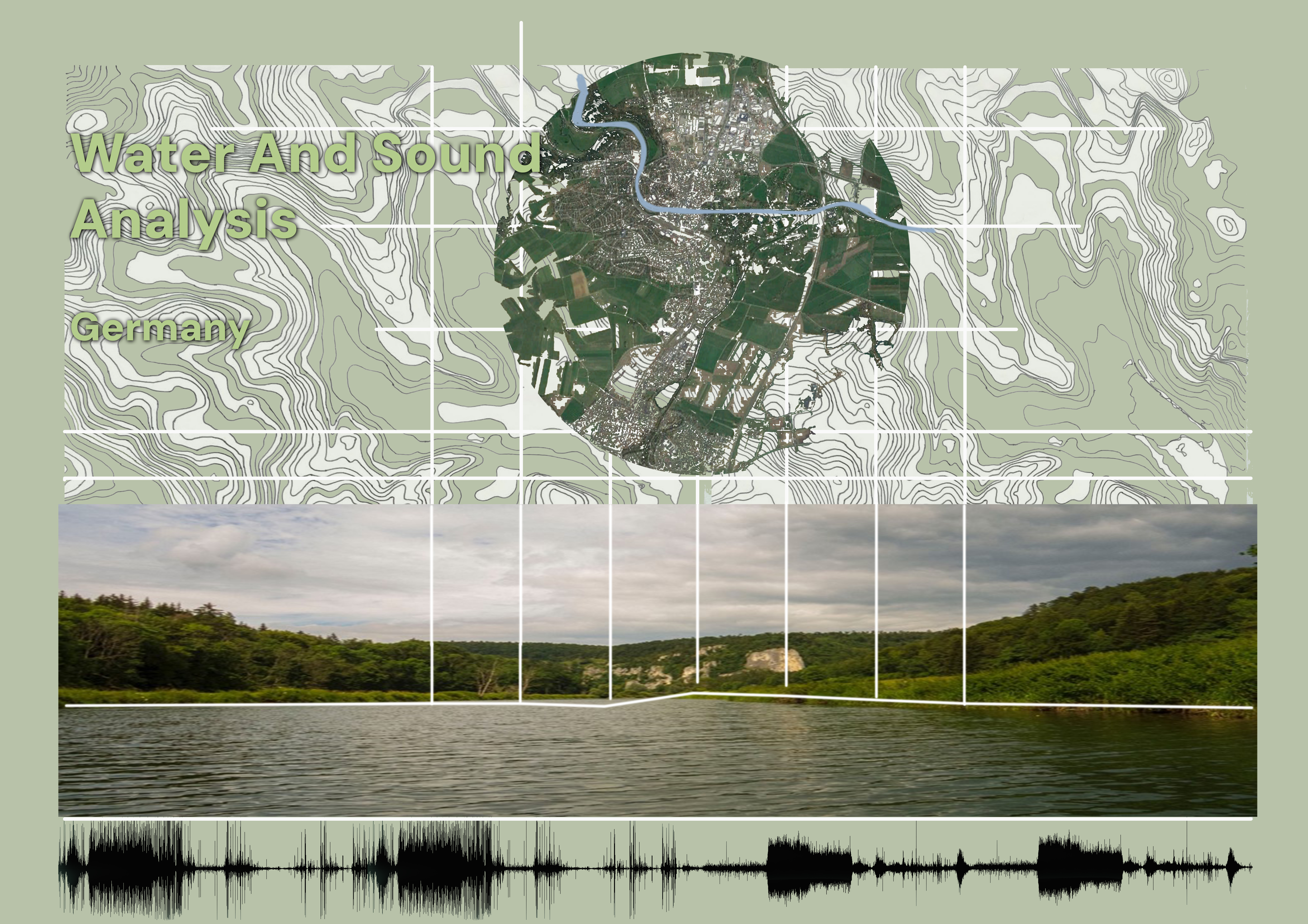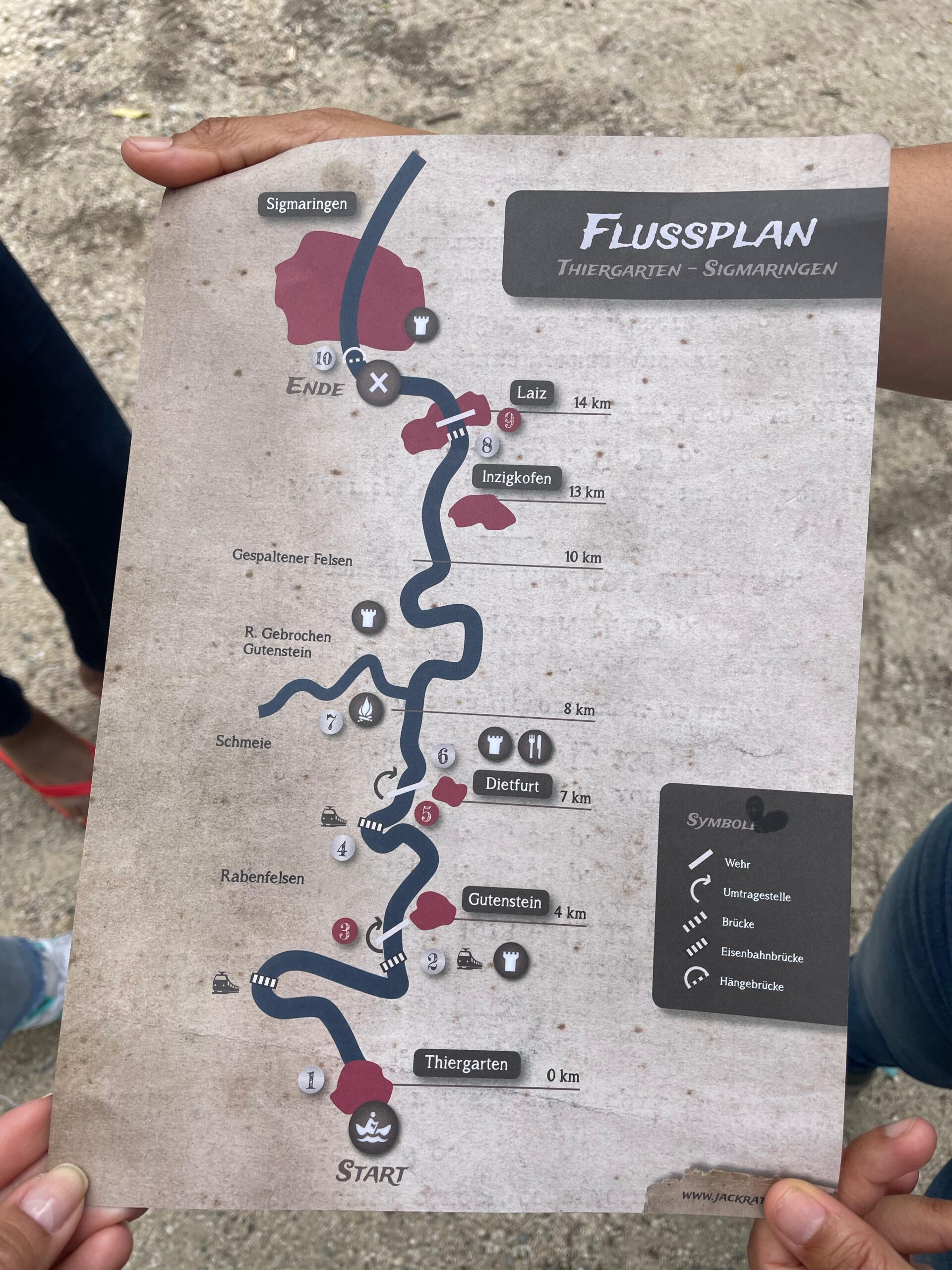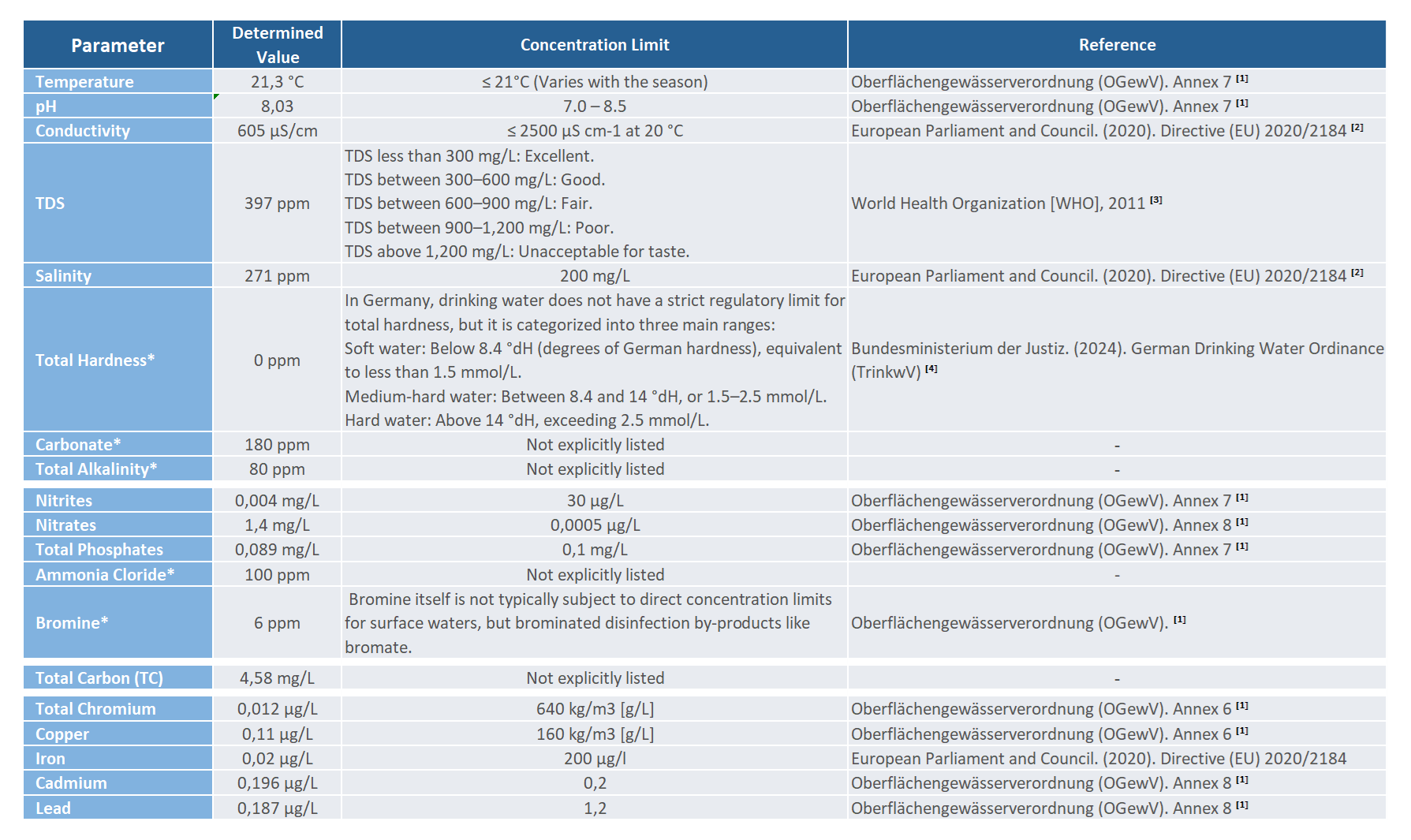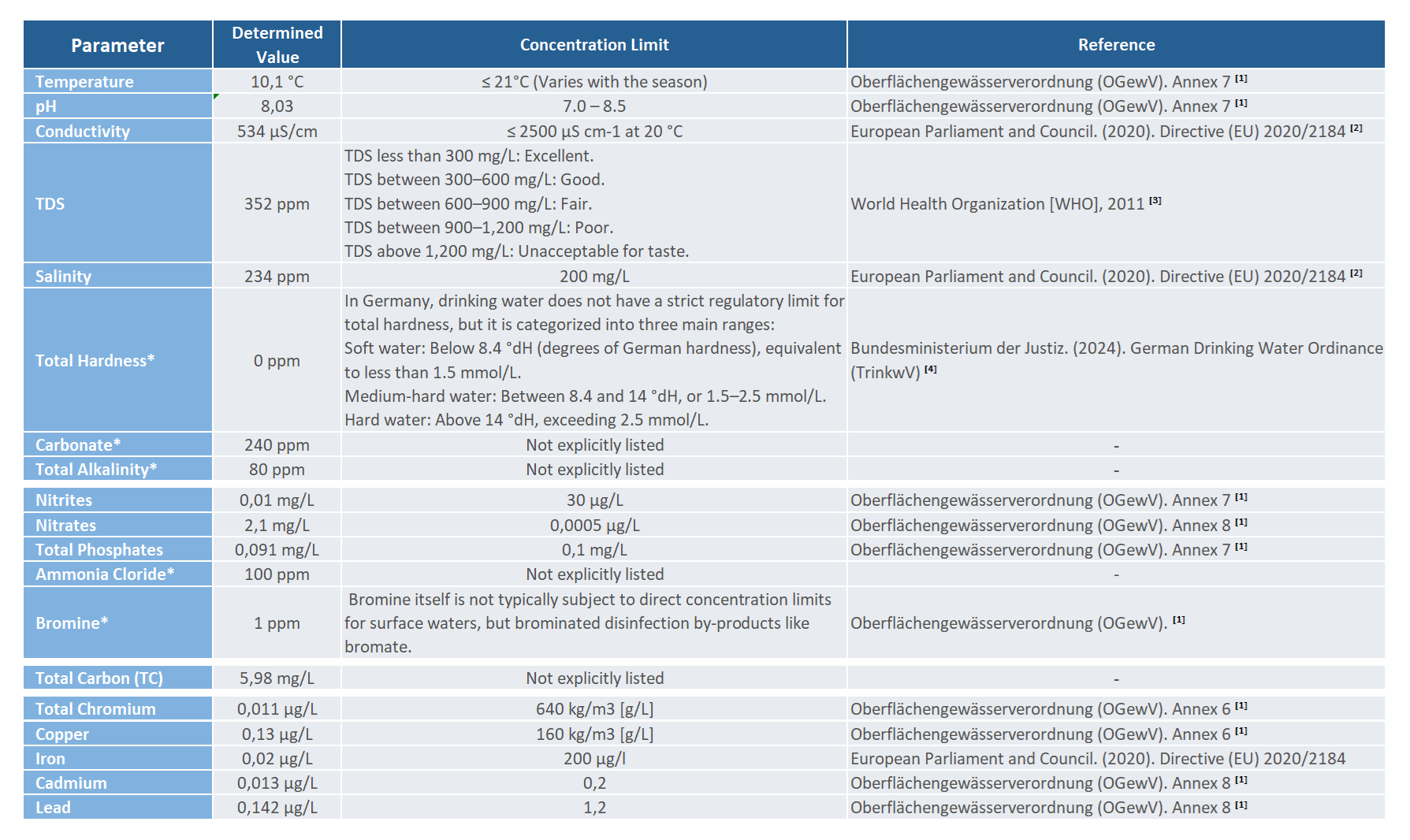Sound and Water Analysis
Danube Excursion - From Thiergarten to Sigmaringen

Sound Analysis
Date and time
02/07/2024
12.00 pm
Location
Down the river on the kayak
Atmospheric Situation A Moody, Rain-Kissed Atmosphere
Immerse yourself in the soft embrace of a cloudy day, where a light rain adds a touch of serenity to the air. The atmosphere feels peaceful and reflective, perfect for those seeking a quiet retreat:
- Cloudy Skies: The sky is blanketed with thick clouds, casting a muted light over the surroundings.
- Gentle Rain: A light drizzle taps the earth, creating a soothing rhythm and adding depth to the mood.
- Calm and Quiet: The rain falls softly, with no wind to disturb the gentle stillness of the moment.

Water Analysis
Sampling point DR-2

The surface water sample collected from the Danube River at the Canopy Danube River Activity – DR-2 sampling point in Germany was analyzed according to several regulatory frameworks to ensure its compliance with water quality standards. The primary guidelines followed include the *Oberflächengewässerverordnung* (OGewV), which sets out the surface water quality criteria for Germany, and the European Parliament and Council’s Directive (EU) 2020/2184, which establishes limits for drinking water quality. Additionally, the World Health Organization (WHO) provided reference values for total dissolved solids (TDS), and the German Drinking Water Ordinance (TrinkwV) was used to assess the hardness of the water. It is worth noting that German surface water regulations do not explicitly cover all of the analyzed parameters, such as carbonate and total alkalinity, so these parameters were evaluated against available international guidelines.
Upon evaluation of the analyzed parameters, several results complied with the regulatory standards. The water temperature of 21.3°C is right at the threshold of 21°C specified by OGewV, meaning it is within the acceptable range for seasonal variability. The pH of 8.03 falls within the 7.0 – 8.5 range established by OGewV, indicating neutral to slightly alkaline water, which is suitable for most aquatic organisms. Conductivity measured at 605 µS/cm is well below the 2500 µS/cm limit set by the European Directive, showing that the water is not overly ionized. Additionally, the TDS of 397 ppm is considered „Good“ according to WHO guidelines, and the nitrate level of 1.4 mg/L is below the more stringent limit for drinking water (0.0005 µg/L) under the OGewV, which highlights the low pollution level. Furthermore, total phosphorus at 0.089 mg/L is compliant with the 0.1 mg/L limit, indicating that eutrophication risks are minimal.
However, certain parameters in the water sample from DR-2 do not meet the regulatory limits. The nitrate concentration of 1.4 mg/L exceeds the stringent threshold of 0.0005 µg/L set by the OGewV, suggesting a potential concern related to agricultural runoff or pollution, which can lead to water quality degradation. Similarly, the salinity level of 271 ppm surpasses the 200 mg/L threshold in the European Directive, indicating that the water may be slightly brackish, which could affect its suitability for freshwater organisms. Additionally, although cadmium (0.196 µg/L) and lead (0.187 µg/L) are within the allowed limits of 0.2 µg/L and 1.2 µg/L, respectively, their presence still raises concerns due to the potential for bioaccumulation and toxic effects on aquatic ecosystems. The elevated salinity and nitrate levels, in particular, may cause ecological imbalances, such as reduced biodiversity, altered aquatic life, and possible long-term damage to the river’s ecosystem. Further monitoring and mitigation strategies would be necessary to address these challenges and ensure the continued health of the Danube River.
Water Analysis
Sampling point DR-9

The water sample collected from the Danube River at the Canopy Danube River Activity – DR-9 sampling point in Germany was analyzed with reference to several regulatory frameworks to ensure its compliance with surface water quality standards. These regulations include the Oberflächengewässerverordnung (OGewV), which outlines the quality criteria for surface waters in Germany, the European Parliament and Council’s Directive (EU) 2020/2184, which addresses drinking water quality standards, and the World Health Organization’s (WHO) guidelines for total dissolved solids (TDS). Additionally, the German Drinking Water Ordinance (TrinkwV) was used to assess hardness levels, even though it does not set specific limits for surface water hardness. It is important to note that German regulations do not specifically cover all parameters, such as carbonate and total alkalinity, and thus international guidelines and general water quality recommendations were used to evaluate these parameters.
The analysis revealed that several of the measured parameters met the regulatory standards. The water temperature of 10.1°C is well below the seasonal limit of 21°C specified by the OGewV, which is typical for colder seasons and suggests that thermal pollution is not a concern. The pH level of 8.03 falls within the acceptable range of 7.0 – 8.5 as per the same regulation, indicating the water is neither too acidic nor too alkaline for aquatic life. Conductivity measured at 534 µS/cm is well below the 2500 µS/cm threshold established by the European Directive, suggesting that the water is not overly ionized. Additionally, the TDS value of 352 ppm is within the „Good“ range, as per the WHO guidelines, indicating acceptable levels of dissolved solids. Nitrites, total phosphorus, and cadmium also met their respective limits, reflecting minimal pollution in these areas.
However, some parameters exceeded the regulatory limits, potentially posing risks to both water quality and aquatic life. The nitrate concentration of 2.1 mg/L exceeds the stringent limit of 0.0005 µg/L set by the OGewV for drinking water quality, indicating the possible presence of agricultural runoff or wastewater discharge into the river, which could contribute to nutrient loading and eutrophication. Salinity levels at 234 ppm exceed the 200 mg/L limit for surface waters set by the European Directive, indicating that the water is brackish, which could affect freshwater organisms. While iron, copper, chromium, and lead concentrations remain below their respective limits, their cumulative presence, particularly in the long term, could cause bioaccumulation and toxicity in aquatic species. The elevated levels of nitrate and salinity, in particular, could lead to ecological imbalances, such as the promotion of algae growth, oxygen depletion, and potential harm to aquatic biodiversity. Therefore, continued monitoring and mitigation efforts are necessary to protect the river’s ecosystem and ensure water quality for both environmental and public health purposes.
References:
[1] Federal Ministry of Justice and Consumer Protection. (2016). Oberflächengewässerverordnung (OGewV) [Surface water ordinance]. https://www.gesetze-im-internet.de/ogewv_2016/index.html#BJNR137310016BJNE002400000
[2] European Parliament and Council. (2020). Directive (EU) 2020/2184 of the European Parliament and of the Council of 16 December 2020 on the quality of water intended for human consumption. https://eur-lex.europa.eu/legal-content/EN/TXT/?uri=CELEX%3A32020L2184
[3] World Health Organization. (2011). Guidelines for drinking-water quality: Fourth edition, incorporating the first addendum. https://www.who.int/water_sanitation_health/publications/2011/dwq_guidelines/en/
[4] Bundesministerium der Justiz. (2024). Trinkwasserverordnung (TrinkwV) [Drinking water ordinance]. https://www.gesetze-im-internet.de/trinkwv_2001/
